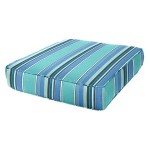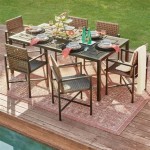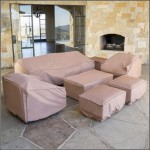Plans For Wooden Patio Chairs: A Comprehensive Guide
Wooden patio chairs offer a blend of aesthetic appeal, durability, and comfort, making them a popular choice for outdoor spaces. Constructing these chairs using readily available plans allows for customization and significant cost savings compared to purchasing pre-made furniture. This article explores various plans for wooden patio chairs, focusing on key considerations for material selection, design types, and construction techniques. Understanding these aspects will enable individuals to successfully build functional and attractive outdoor seating.
Material Selection for Wooden Patio Chairs
The selection of appropriate wood is crucial for the longevity and performance of outdoor furniture. Several types of wood are commonly used for patio chairs, each with unique properties affecting its suitability for outdoor use. The primary factors to consider include rot resistance, insect resistance, cost, and workability.
Cedar:
Cedar is a naturally rot-resistant and insect-resistant softwood. Its aromatic oils deter insects and prevent decay, making it an excellent choice for outdoor projects. Cedar is relatively easy to work with, accepts paint and stain well, and has a visually appealing grain. However, cedar tends to be more expensive than some other options.Redwood:
Similar to cedar, redwood is another softwood prized for its natural durability. It contains tannins that act as preservatives, making it resistant to decay and insect infestation. Redwood is also visually appealing with its rich reddish-brown color. Like cedar, redwood tends to be a more premium-priced option.Teak:
Teak is a hardwood renowned for its exceptional durability and resistance to the elements. It is naturally oily, which protects it from moisture damage and insect attacks. Teak is often considered the gold standard for outdoor furniture, but its high cost can be a limiting factor. Teak requires minimal maintenance, but if left untreated, it will weather to a silver-gray patina.Cypress:
Cypress is another durable option that offers good rot resistance and workability. It is less expensive than cedar, redwood, and teak, making it a more budget-friendly choice. Cypress has a lighter color than redwood and cedar, which can be beneficial if a lighter finish is desired.Pressure-Treated Pine:
Pressure-treated pine is softwood that has been chemically treated to resist rot and insect damage. It is the most affordable option among the listed materials. However, it is essential to use pressure-treated lumber specifically rated for outdoor use. When working with pressure-treated lumber, safety precautions should be taken, including wearing gloves and a dust mask.Beyond the type of wood, the quality of the lumber itself is crucial. Lumber should be free from knots, cracks, and other defects that can weaken the structure. Kiln-dried lumber is preferable, as it has been dried to a low moisture content, minimizing the risk of warping or shrinking after construction. It’s advisable to purchase lumber from reputable suppliers who can guarantee the quality and grading of their products.
Design Types and Plans for Wooden Patio Chairs
There is a wide array of wooden patio chair designs available, ranging from simple Adirondack chairs to more intricate rocking chairs and lounge chairs. The choice of design depends on personal preferences, skill level, and the intended use of the chairs.
Adirondack Chairs:
Adirondack chairs are characterized by their sloping seats, high backs, and wide armrests. They are known for their comfort and relaxed seating position. Numerous variations of Adirondack chair plans exist, ranging from traditional designs to more modern interpretations. These plans often include detailed cutting diagrams and assembly instructions. The construction typically involves assembling individual components such as the back slats, seat supports, armrests, and legs.Folding Chairs:
Folding wooden patio chairs offer portability and space-saving storage. These chairs are designed to collapse easily, making them ideal for smaller patios or for taking on camping trips. Folding chair plans often involve more intricate joinery and hardware to ensure the chair is both sturdy and foldable. The complexity of the folding mechanism can vary, with some designs using simple hinges and others employing more sophisticated linkage systems.Rocking Chairs:
Rocking chairs provide a gentle rocking motion, making them a relaxing addition to any patio. Building a wooden rocking chair requires precise measurements and careful shaping of the rockers. Rocking chair plans often include templates for the rockers and detailed instructions for assembling the frame. The rocker shape and angle are critical to ensure a smooth and stable rocking motion.Lounge Chairs:
Lounge chairs are designed for maximum comfort and relaxation. They typically feature reclining backs and padded cushions. Building a wooden lounge chair involves creating a sturdy frame and then adding upholstery or cushions for added comfort. Lounge chair plans may include instructions for building the frame, attaching the backrest, and installing the cushions.Bench-Style Chairs:
These are wider chairs, sometimes designed for two people, resembling a small bench. They usually offer armrests on the sides and a straight back. Bench-style chairs are great when you have a lot of space and want a visually appealing and comfortable seating option. They can be made from various types of wood and customized with different finishes and cushions.When selecting a plan, it is essential to consider the complexity of the design and the builder's skill level. Beginner-friendly plans typically feature simpler joinery and fewer parts, while more advanced plans may involve intricate cuts and complex assembly steps. It is also important to check the plan for accuracy and completeness before starting construction.
Many sources provide plans for wooden patio chairs, including woodworking magazines, online forums, and websites dedicated to woodworking projects. Some plans are free, while others are available for purchase. Paid plans often offer more detailed instructions and higher-quality diagrams.
Construction Techniques and Joinery
The success of a wooden patio chair project depends not only on material selection and design but also on the application of sound construction techniques and joinery methods. Strong and durable joints are essential for ensuring the chair can withstand the stresses of outdoor use.
Butt Joints:
Butt joints are the simplest type of joint, where two pieces of wood are joined end-to-end or edge-to-edge. While easy to execute, butt joints are inherently weak and require reinforcement with fasteners such as screws or nails. They are best suited for non-structural elements or for applications where additional support is provided by other joints.Lap Joints:
Lap joints are created by overlapping two pieces of wood and securing them together. This joint provides more surface area for gluing and fastening, resulting in a stronger connection than a butt joint. Lap joints are commonly used for framing and bracing.Mortise and Tenon Joints:
Mortise and tenon joints are among the strongest and most durable types of wood joints. A mortise is a hole or recess cut into one piece of wood, while the tenon is a projection that fits into the mortise. This joint provides a mechanical interlock between the two pieces of wood, resulting in a strong and stable connection. Mortise and tenon joints are often used for chair legs, back supports, and other critical structural elements.Dovetail Joints:
Dovetail joints are known for their exceptional strength and aesthetic appeal. They are characterized by interlocking wedge-shaped pins (dovetails) that prevent the joint from pulling apart. Dovetail joints are typically used for drawers and other applications where strength and visual appeal are paramount. However, they are generally not used in patio chairs. Instead, these joints are often seen in indoor furniture.Pocket Hole Joints:
Pocket hole joinery involves drilling angled holes into one piece of wood and then using screws to attach it to another piece. This method is relatively easy to learn and provides a strong and concealed joint. Pocket hole joinery is a good option for assembling frames and attaching panels. Often, the screws are not visible, leaving a clean finish.In addition to selecting the appropriate joinery method, it is important to use high-quality adhesives specifically designed for outdoor use. Epoxy resins and polyurethane glues offer excellent water resistance and bonding strength. Ensure that all surfaces are clean and dry before applying glue, and clamp the joint securely until the glue has fully cured. The use of clamps is crucial to ensure a tight and properly aligned connection.
Proper sanding and surface preparation are essential for achieving a smooth and long-lasting finish. Start with coarse sandpaper to remove imperfections and then gradually progress to finer grits. After sanding, apply a wood preservative or sealant to protect the wood from moisture damage and UV exposure. Exterior-grade paints and stains can also be used to add color and protect the wood. It is crucial to apply multiple coats of finish, following the manufacturer's instructions for drying times and application techniques.
Consider the type of fasteners used. Stainless steel screws are the best option for outdoor furniture, as they will not rust or corrode. If nails are used, choose galvanized or stainless steel nails for the same reason. Pre-drilling pilot holes before driving screws or nails will help prevent splitting the wood and ensure a stronger connection. The diameter of the pilot hole should be slightly smaller than the diameter of the fastener.
By paying careful attention to material selection, design choices, and construction techniques, individuals can successfully build durable and attractive wooden patio chairs that will provide years of enjoyment. The combination of careful planning, precise execution, and quality materials will result in outdoor furniture that is both functional and aesthetically pleasing.

Diy Patio Chair Plans And Tutorial Step By Videos Photos

Patio Chair Popular Woodworking

Diy Patio Chair Plans And Tutorial Step By Videos Photos

Diy Patio Chair Plans And Tutorial Step By Videos Photos

Patio Chair Popular Woodworking

Outdoor Patio Chairs Plans Club Tylynn M

Diy Modern Outdoor Chair Free Plans Cherished Bliss

Outdoor Patio Chairs Plans Club Tylynn M Diy Furniture

Outdoor Lounge Chair Build Plans Houseful Of Handmade

Essential Wood Outdoor Chair Frame For Deep Seat Cushion Ana White








